Australian Native Animals
When you think of Australian Native Animals, the first thing pops into your head is probably a Kangaroo! Australia is filled with weird and wonderful animals, In this post we will run through a few of the Australian Native Animals.
Australia is also known to have the most dangerous animals in the world but that’s another story…
Plan your trip
Save on fees abroad with the Wise Card—use it at ATMs, restaurants, and for flights or hotels in over 150 countries. Manage 40+ currencies in real-time with the Wise app.
Need Help Planning?
- Cheap Flights: Find the best deals.
- Accommodation: From hostels to luxury stays.
- Car Rental: Affordable options worldwide.
- Sightseeing Tours: Explore without breaking the bank.
- Travel Adapter: One adapter for all your needs.
- Travel Insurance: Don’t risk it—stay covered.
This post includes affiliate links. Read my full disclosure and content policy.
Kangaroo –
There are 60 species of Kangaroo’s including, wallabies, wallaroos, pademelons, tree-kangaroos and forest wallabies. Kangaroos are the Australian “icon”, they are known for their hopping, boxing and jumping in front of cars. Kangaroos carry their young (joey) in a pouch, Joey’s can live in its mother’s pouch for up to 6 months!
Kangaroos can weigh up to 90kg and can do a lot of damage when they hop in front of your car! Sadly this is very common in the outback and country as they are attracted to the light and noise. Check out “What to do if you hit a Kangaroo”. Kangaroos are usually about during sunrise and sunset and usually asleep under a tree during the hottest parts of the day.
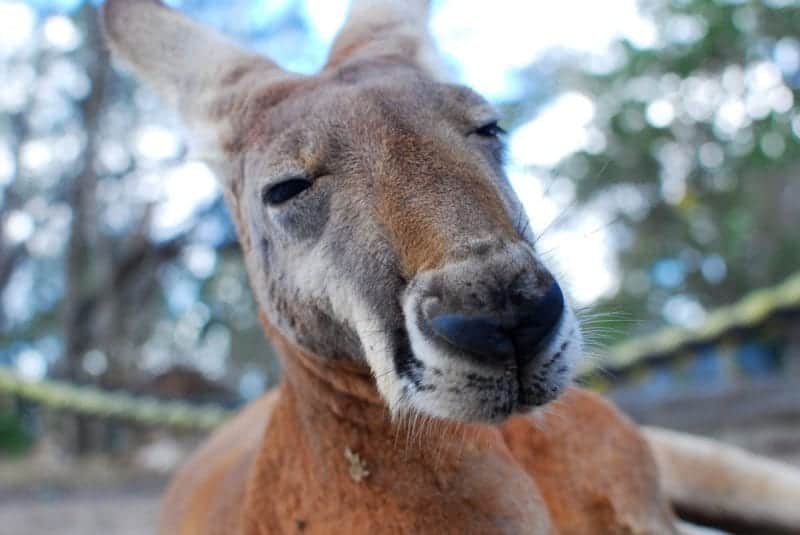
Wallaby –
Wallabies are a much smaller version of a Kangaroo, only weighing up to 12kg- 24kg. There are 30 different types of wallabies that live in many types of habitats, including rocky areas, grasslands, forests and swamps. We were lucky enough to have lunch with some Yellow-footed Rock-Wallabies while in the Flinders Ranges.
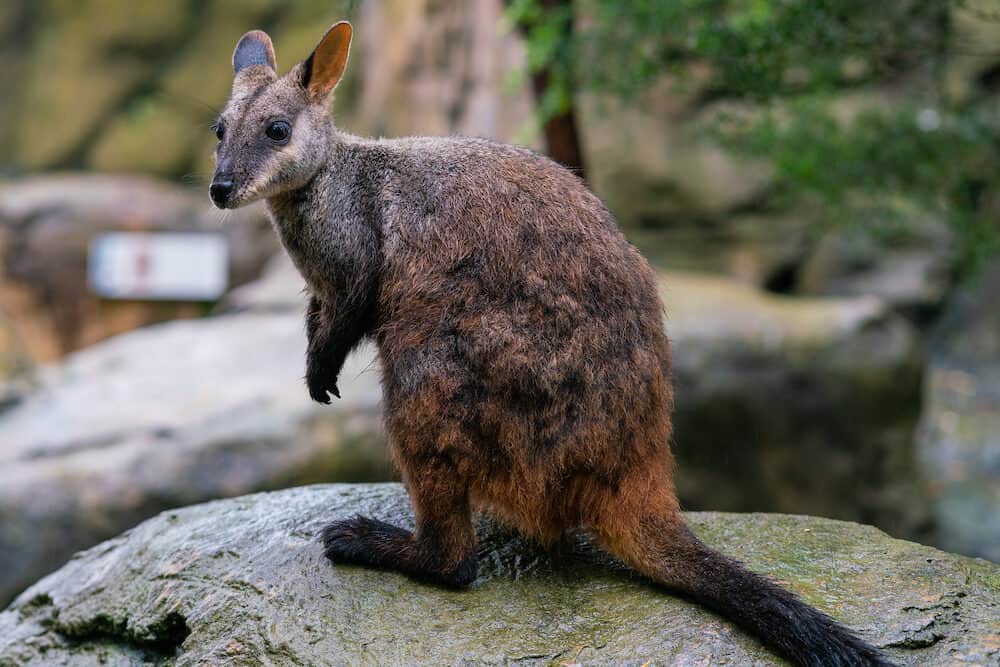
Wallaroo –
Wallaroo’s are a subspecies of the Kangaroo and are in between Kangaroos and Wallabies in size, weighing up to 13kg – 22kg. There are four subspecies of the wallaroo Included the Eastern Wallaroo, the Euro, Black Wallaroo and Antilopine Wallaroo
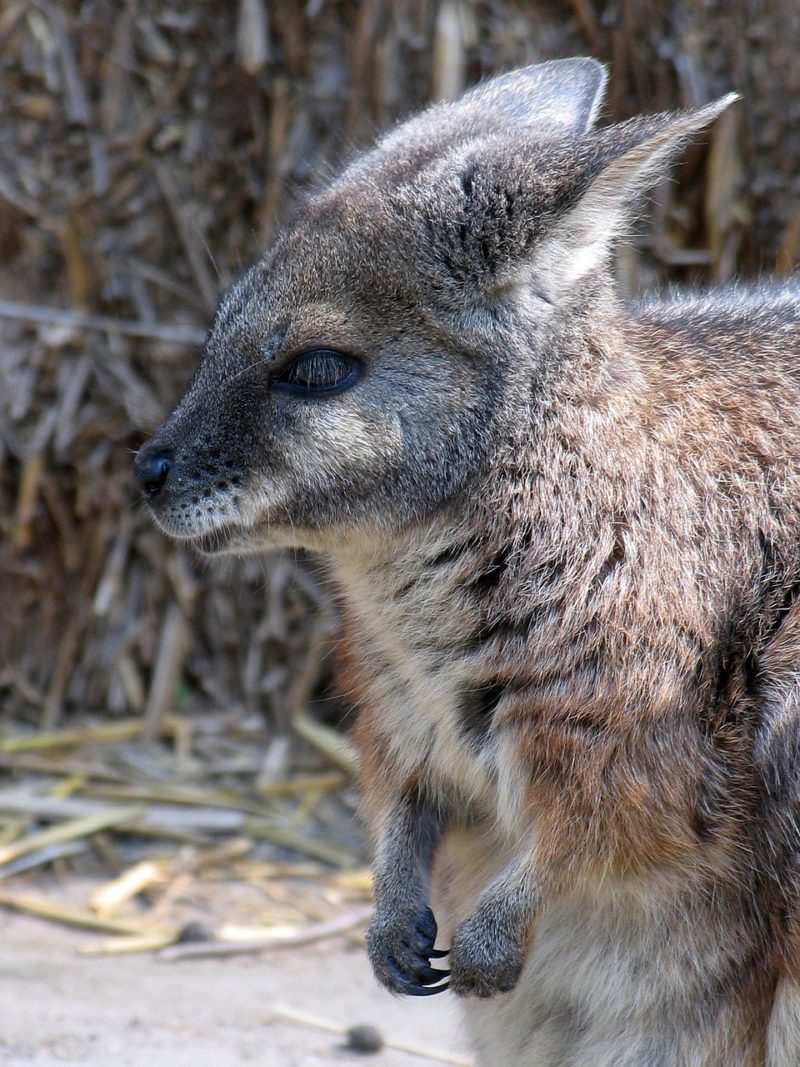
Wombat –
Wombats aka “Bulldozers of the Bush” are cute and fluffy but to farmers they are a huge pain in the butt! They dig massive burrows and tunnels (2-20 metres long) causing damage to not only the fencing but the land itself. There are 3 types of Wombat, the common wombat, northern hairy nosed and southern hairy nosed.. Like the Kangaroo the Wombat also carries its young in a pouch but unlike kangaroos, the wombats pouch faces backward so no dirt gets in when it is tunneling.
They are nocturnal and emerge at night to eat grass and plants. Wombats are a “stocky” build of animal, mostly muscle, weighing up to 17-40kg and averaging about 1 metre long! They look very cute and cuddly but don’t let their appearance fool you, they can be pretty vicious, they are very territorial animals. These crazy little critters can run up to 40km/h and maintain that speed for over a minute!!
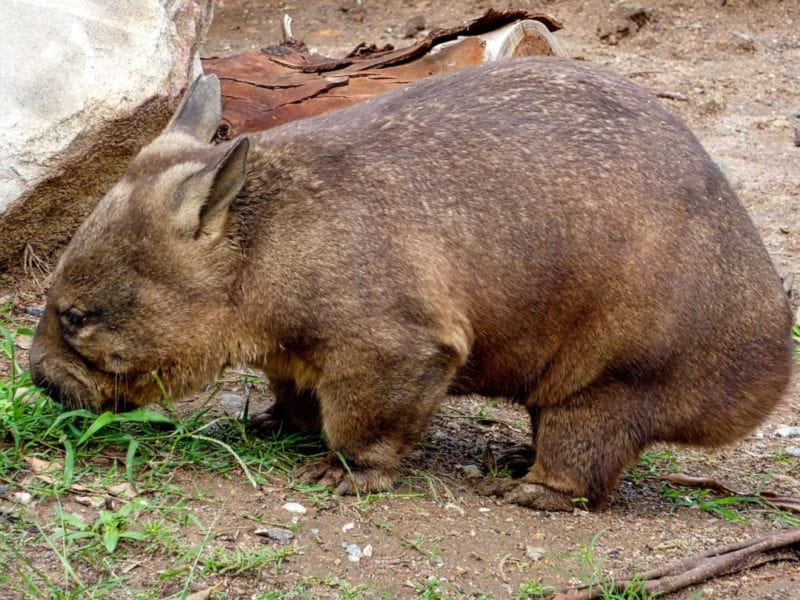
Bilby –
The Bilby is also known as the “rabbit-eared Bandicoot”. They look like a rat like rabbit. The Bilbies are about 30-60cm in length with a tail of 20cm length. They have an excellent sense of smell and hearing as they have fairly poor eyesight. They live in the dessert and are nocturnal animals. The Bilby digs deep spiral burrows so that their predators can’t get them. They are now a protected animal due to predators and habitat destruction.
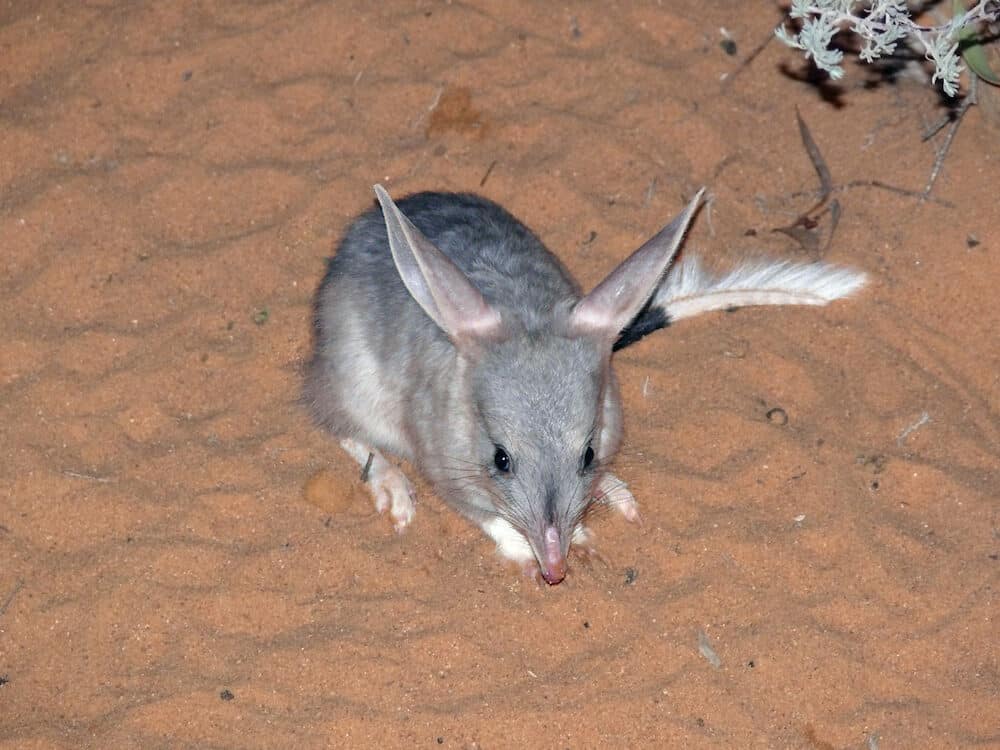
Emu –
Emus are large flightless birds, they stand approx. 1.5-2 metres tall and weigh up to 45kg. Emus are very quick, they can run up to 50km/h and like the Kangaroo, they can and do run in front of your car! We accidentally hit an Emu. Emus have 3 toes and can lay 5-20 eggs which they lay in a nest that is built out of twigs, weeds and grass
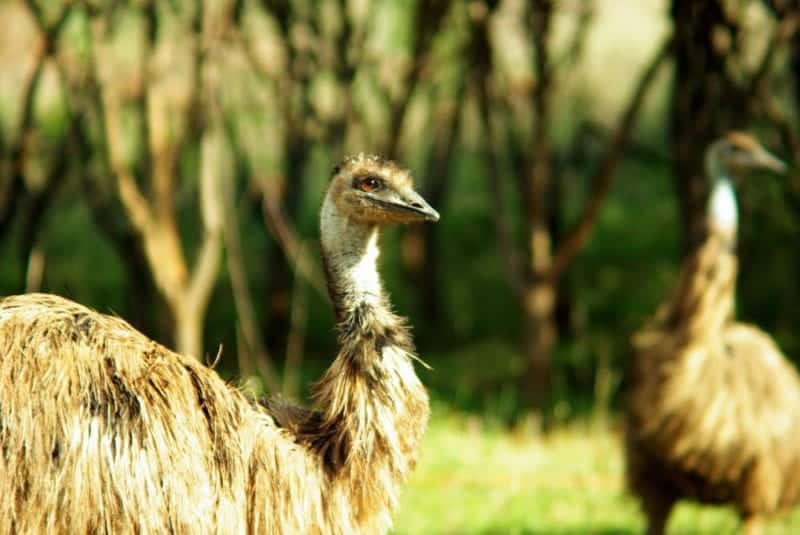
Koala –
Koala’s are the Cuddly teddy bear of the Australian animals, although they aren’t actually bears. Like the Kangaroo, Wombat and Possum, the Koala has a pouch they carry their young in. Koala’s eat Eucalyptus (gum tree’s) leaves and generally live in the areas with suitable Eucalyptus trees are. They can usually be found up in “forks’ of trees asleep or eating.
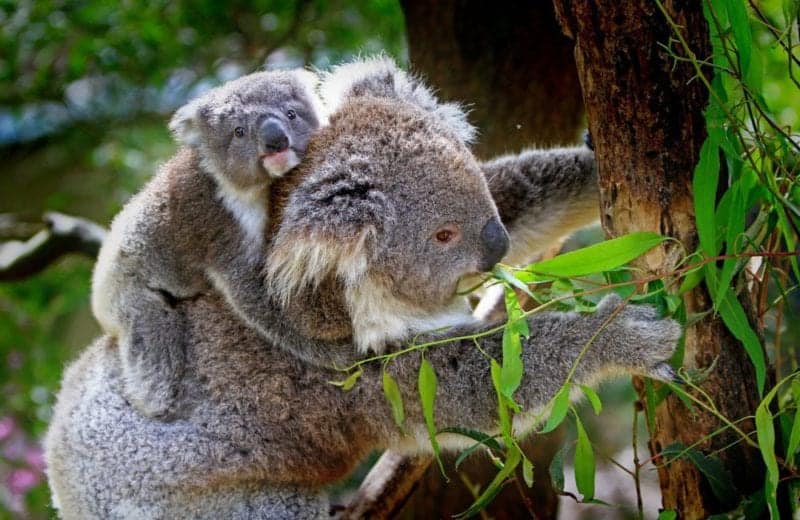
Thorny Devil –
The Thorny Devil is a slow moving small (20cm long) reptile with spiky spine. They are mostly found in the dessert and feed on ants or small bugs. The most interesting fact about the Thorny Devil is that the water which lands on the Thorny Devils back whether it be condensation or rain, runs along thousands of tiny grooves on the reptile to the corner of its mouth where it is drank It moves along these groves by a capillary action. Cool huh! They are believed to live for up to 20 years.
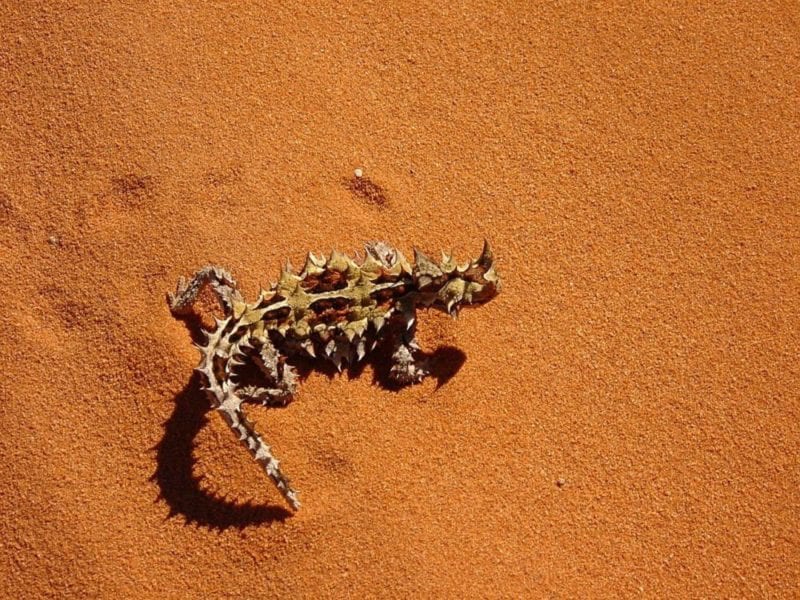
Dingo –
The Dingo is basically a wild dog, they look rather like a dog crossed with a fox, it lives and hunts alone or in pairs rather than in a pack. They are the size of a medium dog and have a long bushy tail. Dingos are opportunistic carnivores tending to hunt at night. The Dingo became famous as one that took a baby in the 1980 while the family was camping near Uluru.
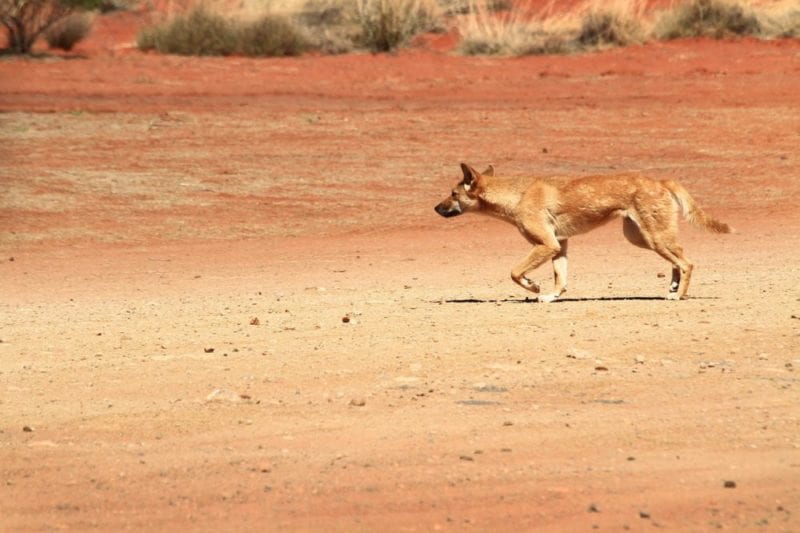
Possum –
The Possum is a nocturnal animal that lives in people’s roof’s and make a racket! I kid they don’t live in the roof although at night you would probably disagree with me! Like the Kangaroo, Wombat and Koala, the Possum has a pouch they carry their young in. They feed on insects and other bugs and spiders.
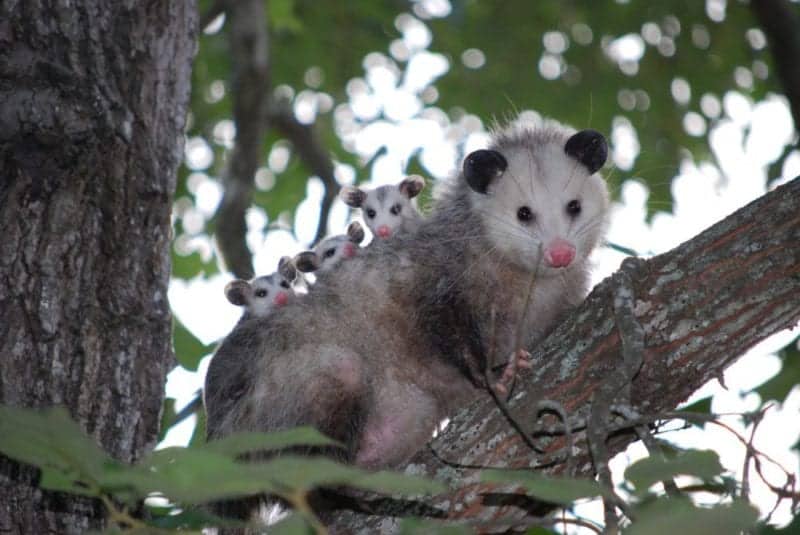

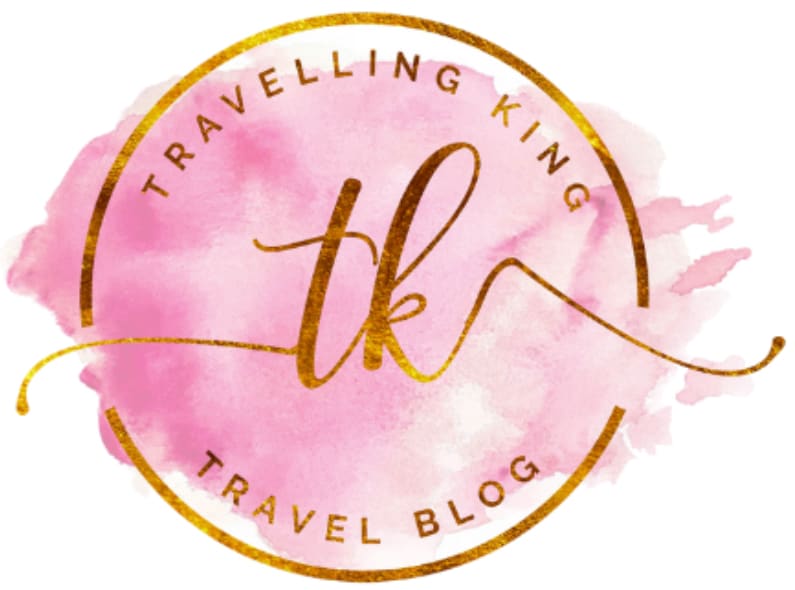

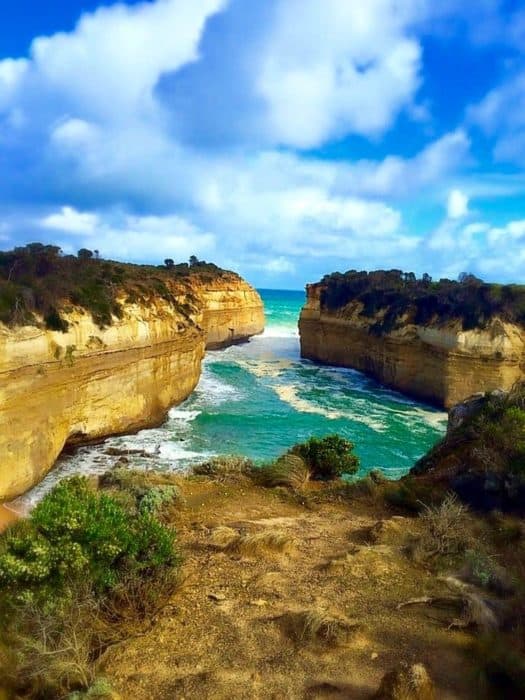

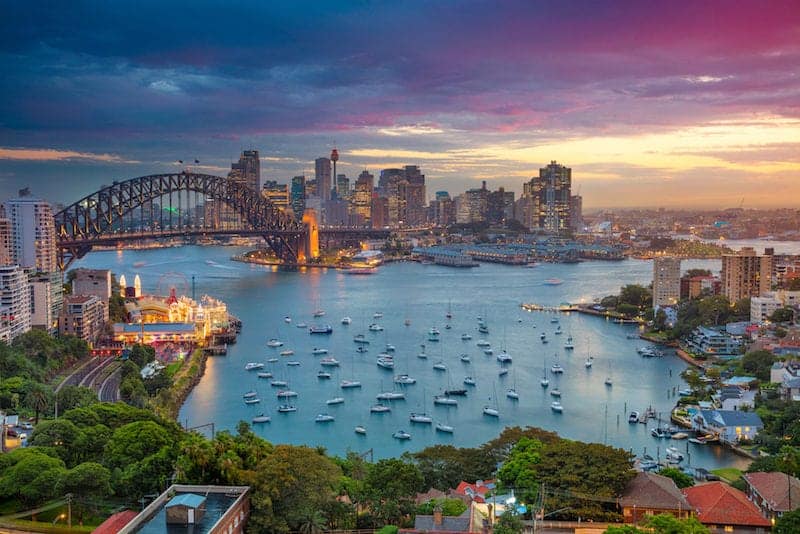
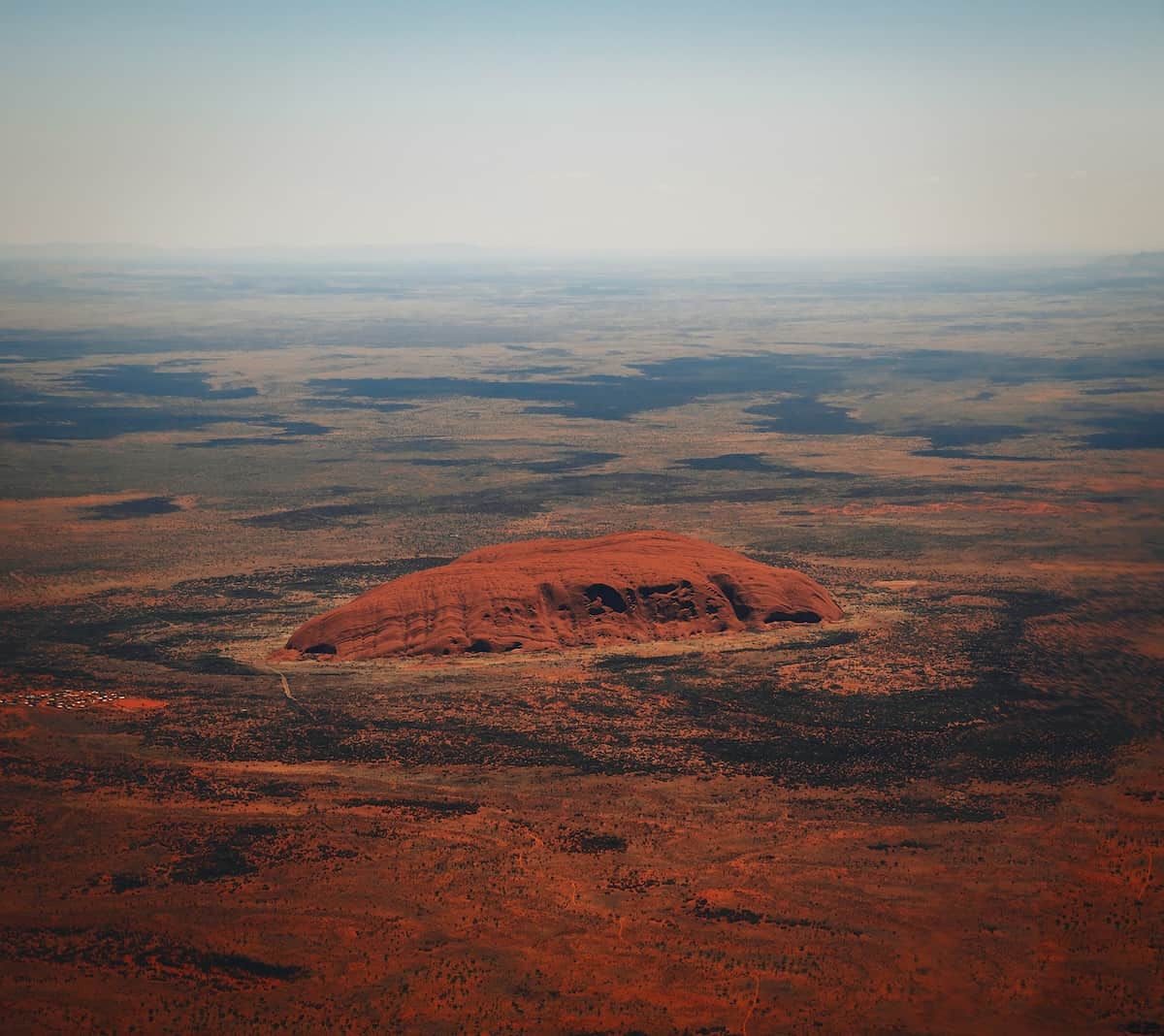

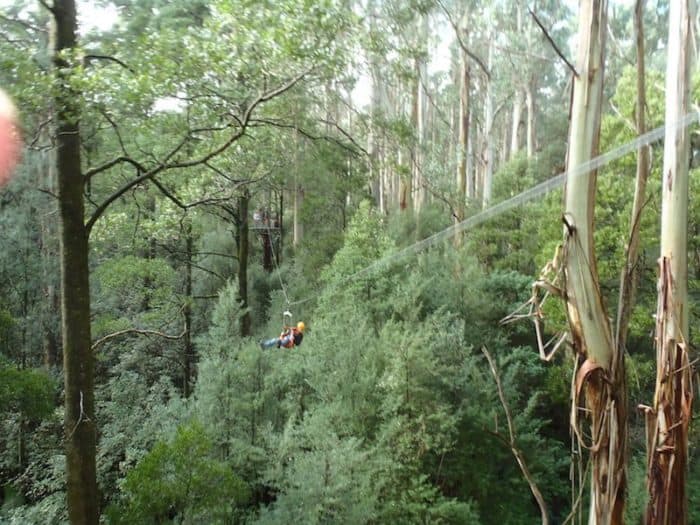
You’re right; when Australia’s mentioned, it’s always the kangaroo which comes to mind. There are certainly some animals here which are new to me, like that thorny devil. It looks like a creature out of fantasy!
Hi Freya!
Its true, most people think Kangaroo… Which is why i decided to do this post 🙂
Im glad I was able to sow you more Aussie animals 🙂
I’m just writing a blog post about Flying Foxes as for a few weeks we had colony of them fly out overhead each evening to feed –
When in Darwin we used to see them every night at dusk form like a blanket in the sky, but here (in the Bay off Brisbane) they performed this evening ritual only for about 2 weeks and then were gone –
It aroused my curiosity as to why!
HI Linda!
I can’ beleive I forgot Flying foxes!! Australia has far too many ntaive animals!!
Strange, I have no idea? maybe it is a weather thing?
We have a large group living in some park lands in the City in Adelaide. They are very interesting to watch
Great stuff! So much to learn in this world…
So nice to read about our own native animals. A big thrill for me was when I saw the Tasmanian Devil for the first time, very cute animal but very vicious. In suburban Melbourne on the farmland adjoining a new estate watched while large grey kangaroos had a boxing match, a fascinating sight.